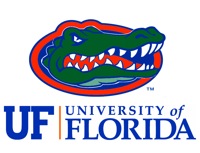Below is a summary of the abstract you submitted. Presenting author(s) is shown in bold.
If any changes need to be made, you can modify the abstract or change the authors.
You can also download a .docx version of this abstract.
If there are any problems, please email Dan at dar78@pitt.edu and he'll take care of them!
This abstract was last modified on May 5, 2017 at 5:29 p.m..

The HHMI SEA-Phages class at UF this year annotated the genome of Mycobacteriophage Hurricane, which was isolated by Karli Knudson, Miranda Edmonds and Katrina Nielsen who participated in the HHMI SEA-Phages program at Washington State University at Pullman WA. Hurricane was isolated from soil collected on the Washington State University campus. Genome sequence revealed that Hurricane is a member of the K3 cluster. Hurricane’s genome is 61,318 bp in length, which is typical of K3 phages (61,252bp average). Hurricane's genome sequence is highly similar to several K3 phages, and exhibits >= 97% to Pixie and Tbond007, and also shows substantial similarity to members of the K6 subcluster. BlastN analysis reveals several (>10) small gaps between the genome alignments between Hurricane and Pixie or Tbond007. Hurricane’s genome has been annotated to identify 98 protein coding features, all but three of which are encoded by the forward strand. The three reverses orientation genes occur approximately mid-way through the genome and split the forward orientation genes into three groups. Details of the genome characterization of Hurricane are discussed, including an examination of potential promotors, repeats and an analysis of Hurricane genes not present in other members of the K3 subcluster.


